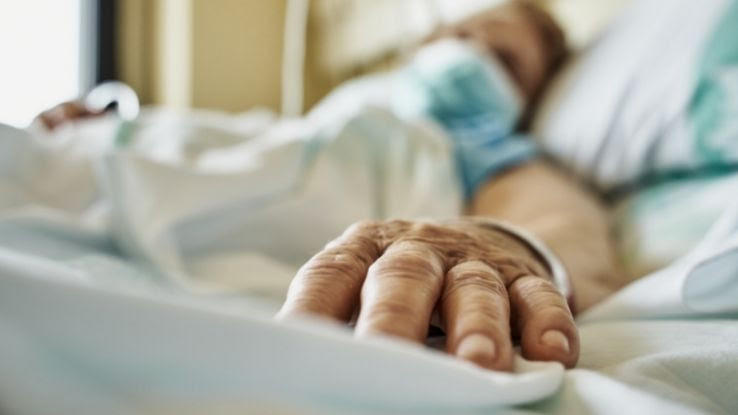Examine This Report on Pacific Prime
Examine This Report on Pacific Prime
Blog Article
The Single Strategy To Use For Pacific Prime
Table of ContentsA Biased View of Pacific PrimeSome Known Factual Statements About Pacific Prime Indicators on Pacific Prime You Should KnowGetting The Pacific Prime To Work
In a lot of states, the insurance provider is needed to send you a copy of the changes to your plan. It is important that you read Recommendations or Motorcyclists so you understand just how your policy has changed and if the policy is still sufficient to meet your needs. To acquire a duplicate of your insurance coverage, please call your insurance coverage agent or company.
The Institute of Medication (IOM) Board on the Effects of Uninsurance launches an extensive evaluation of evidence that addresses the importance of medical insurance coverage with the publication of this report. Coverage Issues is the first in a collection of 6 records that will certainly be provided over the next 2 years recording the reality and consequences of having actually an estimated 40 million people in the United States without medical insurance protection.

Facts About Pacific Prime Uncovered
The goal of this series of researches is to redouble plan attention on a historical problem. Adhering to the lengthiest economic expansion in American background, in 1999, an estimated one out of every six Americans32 million adults under the age of 65 and greater than 10 million childrenremains uninsured (Mills, 2000).

Ten percent of the populace make up 70 percent of wellness treatment expenses, a connection that has continued to be constant over the previous three decades (Berk and Monheit, 2001) - international health insurance. Thus medical insurance remains to serve the function of spreading danger also as it increasingly finances regular care. From the perspective of health and wellness care providers, insurance coverage carried by their individuals aids secure an income stream, and neighborhoods take advantage of economically practical and secure wellness treatment practitioners and establishments
Federal government gives medical insurance to populations whom the private market may not serve successfully, such as impaired and elderly individuals, and populations whose access to healthcare is socially valued, such as children and expecting ladies. The supreme ends of wellness insurance protection for the individual and communities, consisting of work environment neighborhoods of staff members and employers, are improved health and wellness results and lifestyle.
About Pacific Prime
Employees place medical insurance initially by much in relevance amongst all the advantages provided in the workplace (Salisbury, 2001). There have actually been large investments of personal and public funds to provide health and wellness insurance policy, many individuals still have no protection. Despite substantial coverage of survey searchings for and health and wellness care research results, the public stays confused and mistaken about Americans without wellness insurance coverage and the implications of lacking protection.

Without doubt, the intricacy of American wellness treatment financing systems and the wide range of sources of information add to the public's confusion and suspicion concerning medical insurance statistics and their interpretation. This report and those that will certainly adhere to objective to boil down and offer in easily easy to understand terms the considerable research study that bears upon inquiries of wellness insurance policy protection and its relevance.
Fifty-seven percent of Americans polled in 1999 thought that those without medical insurance are "able to get the treatment they require from physicians and health centers" (Blendon et al., 1999, p. 207). In 1993, when nationwide attention was focused on the problems of the uninsured and on pending healthcare legislation, just 43 percent of those questioned held this belief (Blendon et al., 1999).

They likewise receive less preventive services and are less likely to have normal take care of persistent problems such as hypertension and diabetes. Persistent illness can lead to costly and disabling problems if they are not well taken care of (Lurie et al., 1984; Lurie et al., 1986; Ayanian et al., 2000). One nationwide survey asked more than 3,400 adults concerning 15 highly major or morbid conditions.
About Pacific Prime
Additional proof is provided later on in this phase in the conversation of insurance policy and access to health treatment. https://www.anyflip.com/homepage/fcter#About. Individuals without medical insurance are young and healthy and balanced and pick to do without coverage. Nearly fifty percent (43 percent) of those evaluated in 2000 thought that people without wellness insurance coverage official source are most likely to have illness than individuals with insurance
Voters and plan manufacturers in emphasis team conversations identify those without insurance coverage as youths who have the chance to be covered and feel they do not need it (Porter Novelli, 2001). Contrasted to those with at least some personal insurance coverage, the uninsured are much less likely to report being in outstanding or excellent health (Firm for Medical Care Study and High Quality, 2001).
SOURCE: Center for Price and Financing Research Studies, Company for Medical Care Research and Quality, based upon MEPS information. Young person in between 19 and 34 are much much more most likely to lack medical insurance than any kind of various other age. This is primarily due to the fact that they are less typically qualified for employment-based insurance policy as a result of the nature of their task or their brief period in it.
The perception that people without insurance coverage have better-than-average wellness follows from confusing the fairly young age profile of the uninsured with the better health, usually, of more youthful individuals. This covers the link in between health and wellness status and wellness insurance coverage. For those without access to workplace health insurance, inadequate wellness is a prospective barrier to acquiring nongroup insurance coverage since such insurance coverage may be extremely valued, omit preexisting conditions, or be merely not available.
Report this page